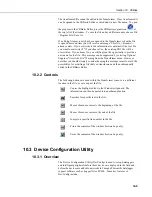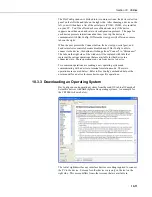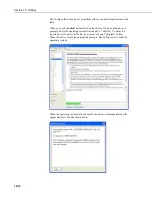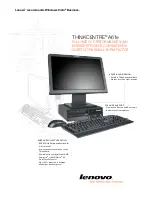
Appendix A. Glossary of Terms
C
Call-back
- When a datalogger is programmed for Call-back, it will
automatically call the host computer when a specified condition is met. The
computer must be set up to look for such an incoming call.
Call-back ID Number
- A three-digit number that is used to identify what
datalogger has called the host computer. (Not available for Table-based
dataloggers.)
Cancel
- Choosing Cancel from a dialog box will typically ignore any changes
made and close the box.
Carrier
– An electrical signal used to convey data or other information. For
example, radio and phone modems use carrier signals. Phone modems attempt
to detect carrier when the call is placed. The red LED on the RF95T lights
when the modem detects a carrier.
Child Node –
See Node. A node that is accessed through another device
(parent node). For example a remote radio frequency (RF) site is accessed
through and a child of the base RF232T. All nodes are child nodes of the PC.
Client –
a software application designed to connect to a server. Usually
provides some type of user interface or data acquisition. Email programs
running on individual PCs are typically client applications that connect to an
email server program running on a computer at an Internet Service Provider to
receive and send email messages.
Coaxial cable –
Special type of cable with two conductors (center conductor
and outer shield conductor). Classified by size, impedance, and loss
characteristics. Used to connect MD9 modems and to connect radios to
antennas.
Collection -
(see Data Collection)
COM Port
- A computer's serial communications port. Cables and other
interface devices are connected between the computer's COM port and the
datalogger.
Communication Server
– The software (typically packaged as a DLL) that
provides the communications functions within other software such as
PC200W, PC400, or LoggerNet.
Control Port
- Dataloggers have digital output ports that can be used to switch
power to sensors such as the HMP35C relative humidity circuit or to control
relays. These digital outputs are called Control Ports and are labeled C1, C2,
etc., on the wiring panel. Control ports on some dataloggers can also be used
as inputs to sense the digital (high or low) state of a signal, monitor pulse
signals, control Synchronous Devices for Measurement (SDM), or used as data
input/output connections for SDI-12 sensors.
CoraScript
– A command line interpreter client to the LoggerNet server that
allows the user access to many of the capabilities of the LoggerNet server
using direct commands or programmed script files.
CR10X-TD Family of Dataloggers
– Any of the Edlog dataloggers with
table-data operating systems become “TD” dataloggers, including the CR10T,
CR510-TD, CR10X-TD, and CR23X-TD.
A-2
Summary of Contents for PC400
Page 2: ......
Page 16: ...Section 1 Introduction 1 6...
Page 18: ...Section 2 System Requirements 2 2...
Page 46: ...Section 4 The PC400 Main Screen 4 24...
Page 49: ...Section 5 Split 5 3...
Page 82: ...Section 5 Split 5 36...
Page 114: ...Section 6 View 6 14...
Page 132: ...Section 7 Short Cut Program Generator 7 18...
Page 188: ...Section 9 Datalogger Program Creation with CRBasic Editor 9 30...
Page 230: ...Appendix B Table Based Dataloggers B 12...
Page 249: ......
















































